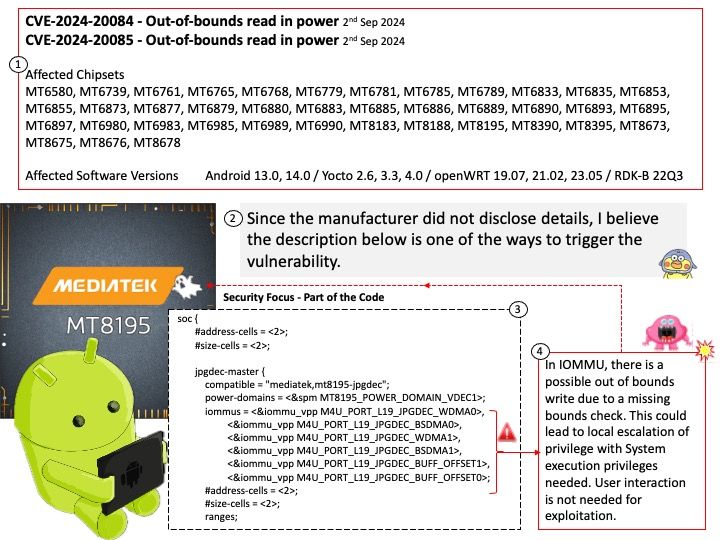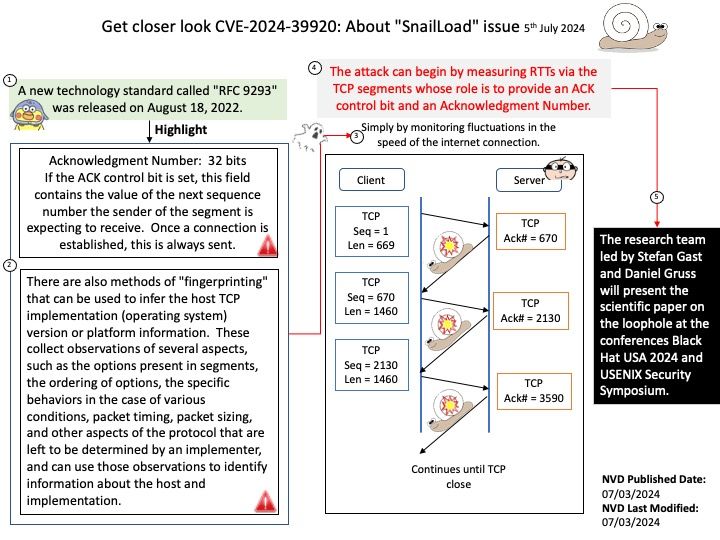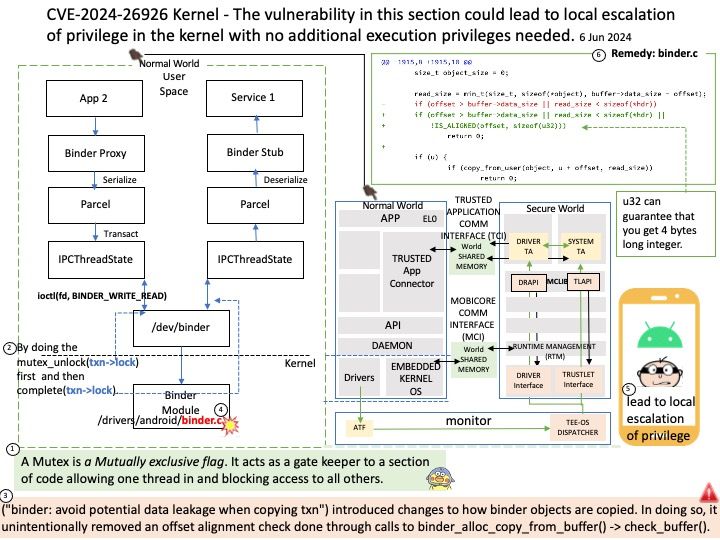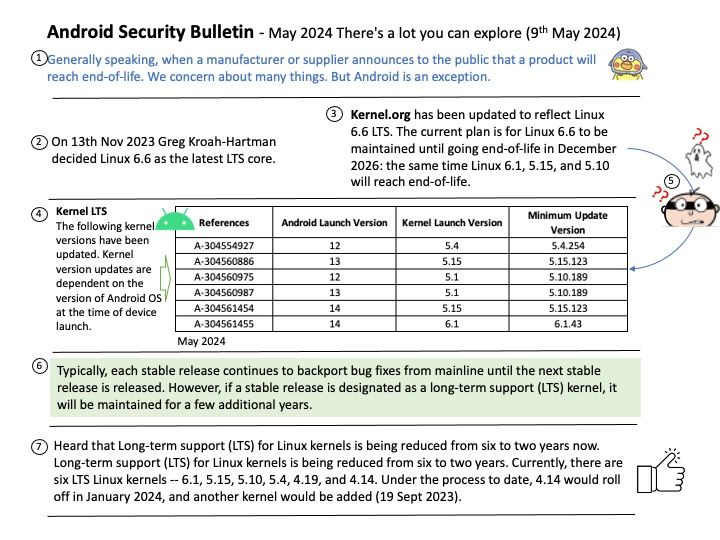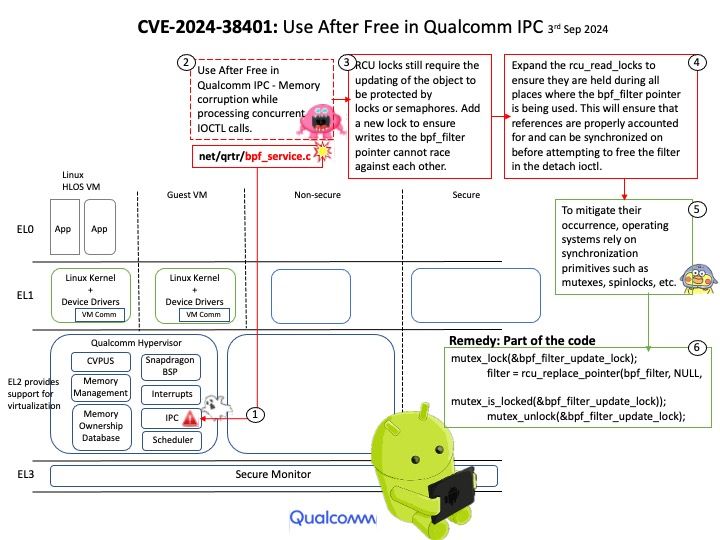
Preface: Race conditions arise when multiple threads attempt to access a shared resource without proper synchronization, often leading to vulnerabilities such as concurrent use-after-free. To mitigate their occurrence, operating systems rely on synchronization primitives such as mutexes, spinlocks, etc.
Background: The Qualcomm Type 1 Hypervisor facilitates the hosting of multiple trusted execution environments for secure use cases. The figure shows the architecture of the Qualcomm Hypervisor software stack, its components, and virtual machines (VM). This figure includes an example of one guest VM using the Linux kernel.
Interprocess communication (IPC), This includes shared memory, message passing (IPC) APIs, and virtual interrupts. The ioctl function performs the generic I/O operation command on filedes . A third argument is usually present, either a single number or a pointer to a structure.
Ref: EL2 provides support for virtualization
Vulnerability details: Use After Free in Qualcomm IPC, Memory corruption while processing concurrent IOCTL calls.
Official announcement: Please refer to the vendor announcement for details – https://docs.qualcomm.com/product/publicresources/securitybulletin/september-2024-bulletin.html
